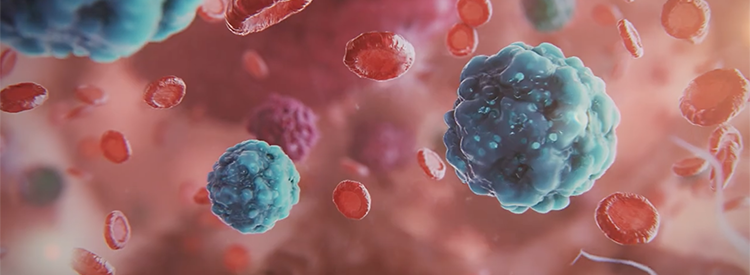GlycoMimetics Reports Improvements in Median Overall Survival Versus Historical Matched Controls for Two AML Patient Subgroups in Phase 1/2 Trial for GMI-1271
- Clinical outcomes, including durability of remission and median
overall survival, in high-risk patients plussafety and
tolerability data presented in oral presentation at
American Society of Hematology Annual Meeting and Expo - Second oral presentation highlights underlying, differentiated mechanism of action for company’s lead clinical candidate
For patients with R/R AML treated at the Phase 2 dose (n = 54) and for whom median follow up was 6.6 months:
- Clinical remission (CR+CRi) was 43%.
-
Median overall survival was 9.4 months (95% CI: 5.7 – 15.1 months;
calculated by
Kaplan Meier method). This compares favorably to a median overall survival of up to 5.4 months reported for historical, matched controls treated with mitoxantrone, etoposide and cytarabine (MEC) alone. 1,2 -
Median duration of remission was 11.1 months (95% CI: 5.8-NA;
calculated by
Kaplan Meier method).
For older patients with newly diagnosed disease (n=25) and for whom median follow up was 10.5 months:
- Clinical remission rate was 68%.
-
Median overall survival was 15.8 months (95% CI: 10.3 – NA; calculated
by
Kaplan Meier method). This compares favorably to a historical median overall survival of approximately 12 months in matched controls treated with 7+3 chemotherapy alone. 3,4 -
Median duration of remission was 14.8 months (95% CI: 8.3 – NA;
calculated by
Kaplan Meier method). - Median event free survival was 11.3 months.
The data were presented yesterday during an oral scientific session at
the 59th
Across both populations, GMI-1271 was well tolerated with no obvious incremental toxicity observed and lower than expected rates of severe, debilitating, grade 3-4 mucositis reported (e.g., 3% incidence reported vs. historical 20-25% incidence with MEC alone).
“These new data from our Phase 1/2 clinical trial demonstrate that
encouraging clinical outcomes are possible for both duration of
remission and survival endpoints when GMI-1271 is added to chemotherapy
in two distinct AML patient populations,” noted
“These results continue to show that AML patients treated with GMI-1271
consistently perform better than expected,” said
The second oral presentation at the ASH meeting highlighted a preclinical study in murine models of AML in which E-selectin was shown to be upregulated, and AML cells binding to E-selectin increased chemo-resistance by activating specific tumor cell survival signaling pathways. This effect within the bone marrow microenvironment is unique to E-selectin as compared to other vascular adhesion molecules and can be blocked by GMI-1271. This translational research provides important evidence that elucidates how treatment with GMI-1271 appears to be improving sensitivity to chemotherapy.
“Given response rates we’ve observed to date that suggest clinical benefit in combination with chemotherapy in two AML populations, this preclinical work provides important further support for the mechanism of action of GMI-1271,” noted Dr. Thackray. “Together, the clinical and preclinical data we have shared at the ASH Annual Meeting demonstrate that GMI-1271 could represent a novel and truly differentiated approach to treatment of AML,” Dr. Thackray concluded.
Meeting abstracts are available on ASH’s website.
GlycoMimetics to Hold Post-ASH Meeting Briefing in Boston on December 19
GlycoMimetics will hold a briefing for investors/analysts, which will
also be available via webcast, to review the GMI-1271 program with a
focus on the AML clinical data presented at the ASH Annual Meeting, at
the
About
GlycoMimetics is a clinical-stage biotechnology company focused on the
discovery and development of novel glycomimetic drugs to address unmet
medical needs resulting from diseases in which carbohydrate biology
plays a key role.
Cautionary Note Regarding Forward-Looking Statements
This press release contains forward-looking statements regarding the
clinical development of GMI-1271, including the expected timing of
clinical trials and the presentation of clinical data. Actual results
may differ materially from those in these forward-looking statements.
For a further description of the risks associated with these statements,
as well as other risks facing
References
1. Feldman EJ, Brandwein J, Stone R, et al. Phase III randomized multicenter study of a humanized anti-CD33 monoclonal antibody, lintuzumab, in combination with chemotherapy, versus chemotherapy alone in patients with refractory or first-relapsed acute myeloid leukemia. Journal of clinical oncology. 2005;23(18):4110-4116. 47.
2. Greenberg PL, Lee SJ, Advani R, et al. Mitoxantrone, etoposide, and cytarabine with or without valspodar in patients with relapsed or refractory acute myeloid leukemia and high-risk myelodysplastic syndrome: a phase III trial (E2995). Journal of clinical oncology. 2004;22(6):1078-1086
3. Foran JM, Sun Z, Claxton DF, et al. North American Leukemia,
4. Lancet JE, Cortes JE, Hogge DE, et al. Phase 2 trial of CPX-351, a fixed 5:1 molar ratio of cytarabine/daunorubicin, vs cytarabine/daunorubicin in older adults with untreated AML. Blood. 2014;123(21):3239-3246.
View source version on businesswire.com: http://www.businesswire.com/news/home/20171212005492/en/
Source:
GlycoMimetics, Inc.
Investor Contact:
Shari Annes, 650-888-0902
sannes@annesassociates.com
or
Media
Contact:
Jamie Lacey-Moreira, 410-299-3310
jamielacey@presscommpr.com


